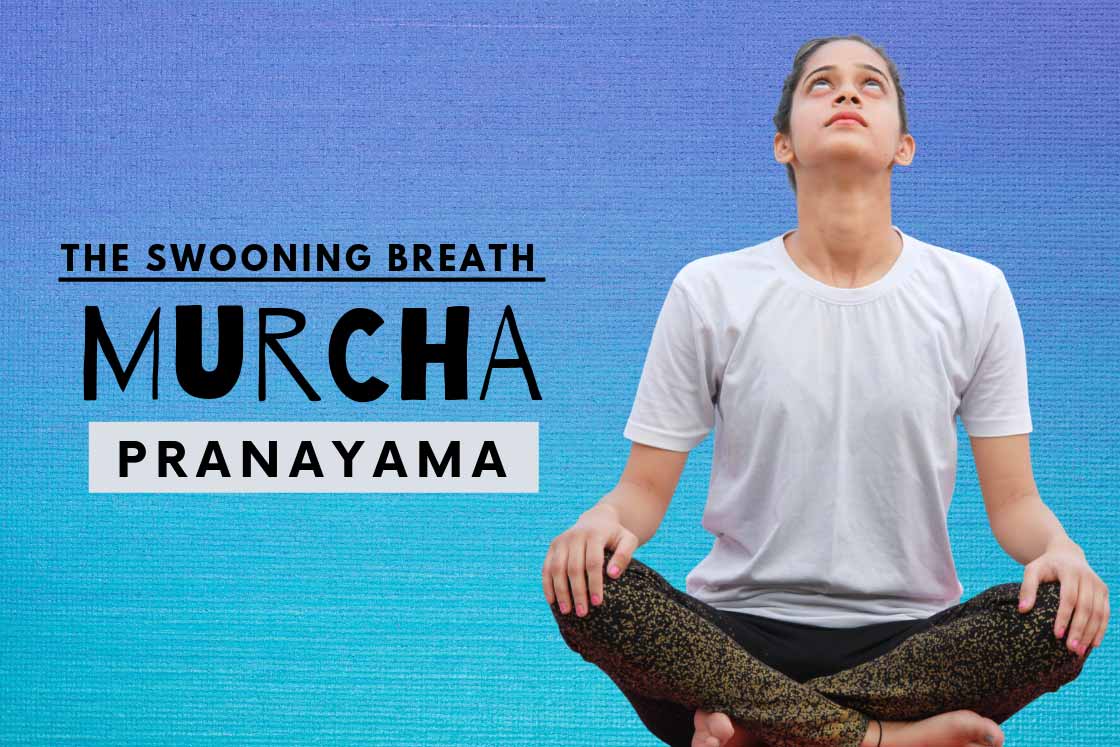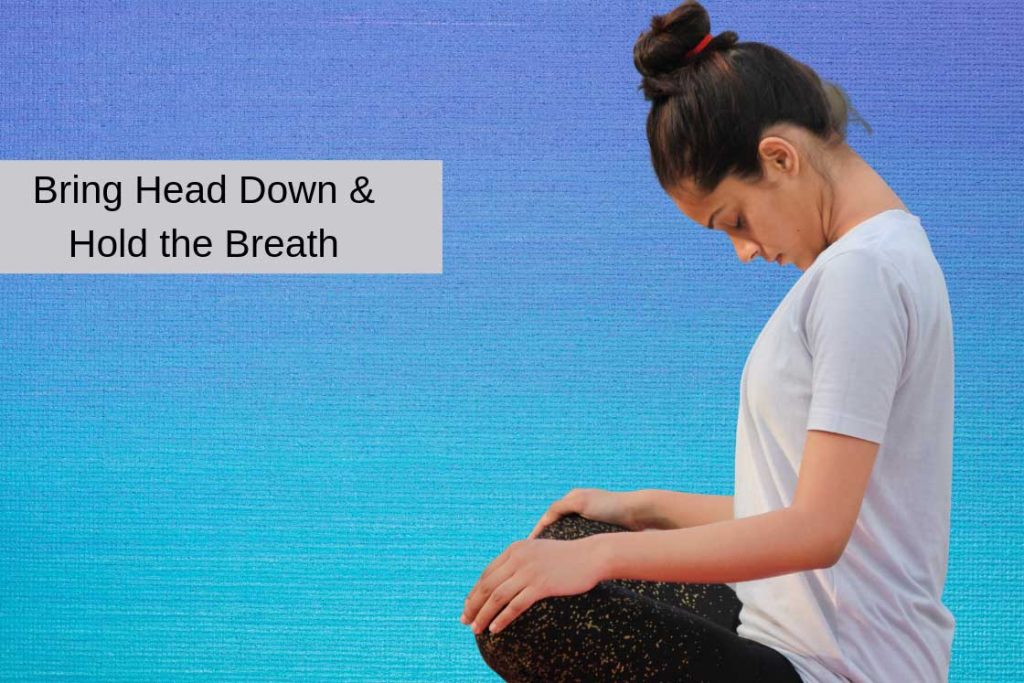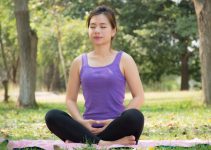
Murcha Pranayama, often referred to as the “swooning breath,” is a unique and advanced breathing technique in yoga. Unlike more common pranayama practices, Murcha Pranayama induces a state of conscious unconsciousness, providing profound mental and spiritual benefits. This technique, deeply rooted in ancient yogic texts like the Hatha Yoga Pradipika, requires a focused mind and precise execution.
Practicing Murcha Pranayama can lead to heightened states of awareness and tranquility. It is particularly beneficial for those looking to deepen their meditation practice, manage stress, and enhance their overall well-being. However, it is crucial to approach this practice with care, as it involves specific Bandhas (breath retention) and mudras (hand gestures).
In this comprehensive guide, we will explore the steps to perform Murcha Pranayama, its benefits, and the necessary precautions to ensure a safe and effective practice.
Meaning of Murcha Pranayama
The term “Murcha” is derived from the Sanskrit word meaning “fainting” or “swooning.” This name reflects the unique sensation experienced during this pranayama’s practice, where the mind enters a state of light-headedness or semi-consciousness.
Murcha Pranayama is also known as the “swooning breath” because it involves holding the breath until a faint, trance-like state is achieved.
How do you do Murcha Pranayama?
Murcha Pranayama is an advanced yogic technique that combines deep inhalation, breath retention (kumbhaka), and specific body locks (bandhas). The practice aims to calm the mind, reduce stress, and enhance mental clarity by temporarily suspending sensory perceptions.
During Murcha Pranayama, the practitioner sits in a comfortable meditative posture and performs a series of controlled breathing exercises. The breath is slowly inhaled, and then retained while the chin is locked against the chest in Jalandhara Bandha (throat lock). This retention of breath, combined with the throat lock, induces a feeling of swooning or faintness, allowing the mind to enter a state of deep stillness and tranquility.
This pranayama technique is mentioned in the Hatha Yoga Pradipika, an authoritative text on Hatha Yoga, which highlights its ability to cause the mind to swoon and bring about a sense of comfort and peace. By practicing Murcha Pranayama, yogis can achieve a temporary state of conscious unconsciousness, where the mind is free from distractions and the body experiences profound relaxation.
Closing the passages with Jalandhar bandha firmly at the end of Puraka (Inhalation), and expelling the air slowly is called Moorcha from its causing the mind to swoon and giving comfort. ~ Hatha Yoga Pradipika, chapter 2, verse 69
Murcha Pranayama is not merely a breathing exercise; it is a meditative practice that bridges the gap between the physical and spiritual realms. It helps practitioners detach from the sensory overload of the external world and journey inward, towards a state of inner peace and self-awareness.
How to Do Murcha Pranayama?
To perform Murcha Pranayama effectively, follow these steps:
- Begin by sitting in a comfortable meditative posture such as Padmasana (Lotus Pose) or Sukhasana (Easy Pose). Ensure that your spine is straight, shoulders are relaxed, and hands are resting on your knees. Close your eyes and take a few moments to calm your mind and focus on your breath.
- Slowly start deep and steady inhalation through both nostrils. As you inhale, practice Khechari Mudra by curling the tongue back so that its tip touches the upper soft palate. This helps in controlling the breath and directing the prana (life force energy).
- While inhaling, gently tilt your head backward and engage in Ujjayi breathing, a technique where the breath is drawn in through the throat, creating a soft, hissing sound. Simultaneously, adopt Shambhavi Mudra by focusing your gaze at the center of your eyebrows.
- Keep your arms straight, lock your elbows, and press your knees firmly with your hands. This alignment ensures that your body remains stable and your attention is fully concentrated.
- After completing the inhalation, retain the breath by performing Jalandhara Bandha (throat lock). To do this, bring your chin down to touch your chest, creating a firm lock at the throat. Maintain this position and hold the breath for as long as you comfortably can, feeling the sensations of light-headedness and calmness.
- When you feel the urge to exhale, release Jalandhara Bandha slowly. Begin exhaling gently and completely, bringing your head back to its upright position. Ensure that the exhalation is gradual and controlled.
- After one round of Murcha Pranayama, take a moment to relax and breathe normally. Close your eyes and observe the sensations in your body and mind. You may feel a sense of tranquility and lightness.
- Repeat the process for several rounds, gradually increasing the duration of breath retention as your comfort level improves. Always listen to your body and avoid pushing beyond your limits.

By practicing these steps with mindfulness and patience, you can master Murcha Pranayama and experience its profound physical and spiritual benefits. Remember to approach this practice with respect and caution, especially if you are new to pranayama or have any medical conditions.
Practice Notes and Awareness
As a Hatha Yoga teacher, I’ve personally found that starting with shorter breath retention periods and gradually extending them has been key to mastering Murcha Pranayama. Practicing in a quiet, well-ventilated space and maintaining a stable, comfortable posture with a cushion or blanket has greatly enhanced my experience. Remember to practice on an empty stomach and consider guidance from a qualified instructor if you’re new to this technique. These steps have helped me safely and effectively deepen my practice.
Awareness:
- Physical Awareness: Throughout the practice, maintain awareness of your breath, body posture, and movements. Pay close attention to the sensation of breath flowing through your nostrils and the feeling of your chest expanding and contracting.
- Mental Awareness: Focus on calming the mind and reducing distractions. As you hold your breath, observe any sensations of light-headedness or calmness without becoming attached to them. This awareness helps deepen your connection to the practice and enhances its benefits.
- Spiritual Awareness: Direct your awareness to the eyebrow center, also known as Chidakasha, the space of consciousness behind the eyebrows. Visualize a void or a point of light in this area. This focus helps to transcend physical sensations and move towards a state of meditative consciousness.
- Emotional Awareness: Notice any emotional changes during and after the practice. Murcha Pranayama can help release negative emotions and bring about a sense of peace and tranquility. Being aware of these shifts can deepen your understanding of the practice’s impact on your emotional well-being.
By following these practice notes and maintaining awareness, you can safely and effectively practice Murcha Pranayama, experiencing its transformative benefits on both the physical and mental levels.
Duration and ideal time of practice
- Initial Practice: When beginning Murcha Pranayama, start with short sessions. Practice for 5-10 minutes in one session. Focus on getting comfortable with the technique and breath retention.
- Intermediate Practice: As you become more accustomed to the practice, gradually increase the duration. Aim for 10-15 minutes per session. This allows you to deepen your breath control and internal awareness.
- Advanced Practice: Once you are thoroughly comfortable and have built up your breath retention capacity, you can extend your practice to 15-20 minutes. Advanced practitioners may even extend this to 30 minutes, depending on their comfort and capability.
The best time to perform Murcha Pranayama is early in the morning on an empty stomach. This allows for optimal breath control and mental focus. If morning practice isn’t possible, ensure there is a gap of at least 3-4 hours after your last meal. Avoid practicing late in the evening as it may interfere with your ability to relax and fall asleep.
Murcha pranayama integrated with other pranayama techniques or yoga asanas. Practicing it after your asana routine or other pranayama exercises can help you achieve a deeper state of relaxation and awareness.
Benefits of Murcha Pranayama

Murcha Pranayama offers a range of mental, physical, and spiritual benefits. Practicing this advanced breathing technique can lead to:
- Mental Clarity and Tranquility: Murcha Pranayama helps clear the mind of negative emotions such as stress, anxiety, and frustration. It induces a state of mental calmness and euphoria, enhancing overall mental efficiency and focus.
- Enhanced Energy Levels: By increasing the flow of prana, or life energy, this practice revitalizes the body and mind. It stimulates the ida and pingala nadis and the central sushumna nadi, leading to improved vitality and energy levels.
- Emotional Balance: The swooning sensation experienced during Murcha Pranayama helps release deep-seated emotions, fostering emotional balance and a sense of inner joy. This practice can lead to a more positive outlook and greater emotional stability.
- Stress Reduction: By creating a state of ‘conscious unconsciousness,’ Murcha Pranayama allows practitioners to experience a blissful, stress-free state. It can be particularly beneficial for those dealing with high levels of stress or emotional turmoil.
- Improved Blood Pressure: Practiced with Jalandhara Bandha, Murcha Pranayama exerts pressure on the carotid sinus, which can help in reducing blood pressure. This makes it beneficial for individuals with hypertension.
- Physical Relaxation: The technique induces a deep state of relaxation in the body, helping to alleviate muscle tension, headaches, and fatigue. It supports overall physical well-being and contributes to a more restful sleep when practiced before bedtime.
Murcha Pranayama Contraindications
Individuals with following conditions should be concerned while performing Murcha Pranayama:
- High or Low Blood Pressure: Individuals with hypertension or hypotension should avoid Murcha Pranayama due to the pressure it exerts on the blood vessels and cranial cavity.
- Heart Conditions: Those with heart diseases such as atherosclerosis or other serious heart conditions should practice only under medical supervision.
- Mental Health Issues: People with mental disorders, including severe anxiety or depression, should avoid this practice, as it can intensify symptoms.
- Pregnancy: Pregnant women should avoid Murcha Pranayama as the technique can place undue stress on the body and affect overall well-being.
- Epilepsy and Neurological Disorders: Individuals with epilepsy or other brain disorders should not practice Murcha Pranayama, as it may trigger adverse effects.
Always consult with a healthcare provider before beginning any new pranayama practice, particularly if you have any pre-existing health conditions.
Conclusion
Murcha Pranayama is a profound breathing technique that fosters mental clarity, emotional balance, and physical relaxation. By incorporating this practice into your routine, you can experience enhanced vitality, stress reduction, and inner peace. However, it’s essential to practice Murcha Pranayama with proper guidance and awareness of contraindications to ensure safety and effectiveness. Embracing this technique thoughtfully can lead to a more centered and harmonious state of being.
FAQs related to Murcha Pranayama
Sit in a meditative posture, inhale deeply through both nostrils, retain the breath with Jalandhara Bandha, and exhale slowly when you feel dizziness.
Avoid this practice if you have high or low blood pressure, heart conditions, severe mental health issues, or neurological disorders.
It promotes inner peace, mental clarity, and spiritual insight by helping release negative emotions and enhancing self-awareness.
Benefits include mental clarity, stress reduction, increased energy, emotional balance, and improved blood pressure.
Early morning on an empty stomach or before bedtime is ideal time to practice Murcha Pranayama.





read murcha pranayama a good article, but not sure I can do it. please advise. is there other breathing I could do to feel bliss? excuse my grammar mistakes. sincerely Richard jones
Thank you …good information.